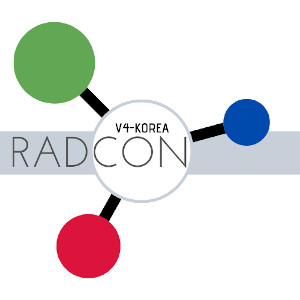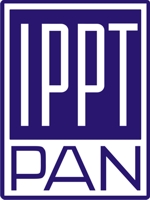THE EFFECT OF CHEMICAL COMPOSITION OF CONCRETE ON ITS LONG-TERM PERFORMANCE IN IRRADIATED ENVIRONMENT
Principal Investigator: Prof. Michał A. Glinicki
THE EFFECT OF CHEMICAL COMPOSITION OF CONCRETE ON ITS LONG-TERM PERFORMANCE IN IRRADIATED ENVIRONMENT
Principal Investigator: Prof. Michał A. Glinicki
About
DESCRIPTION:
The research topic is the radiation-induced damage to cement-based materials. The investigation is aimed to reveal the influence of chemical composition and the long term ionizing radiation on material properties and stability of microstructure of concrete.
PARTICIPANTS:
- Yonsei University, Korea (consortium leader)
- Czech Technical University, Czech Republic (Faculty of Civil Engineering)
- Hungarian Academy of Sciences, Hungary (MTA Centre for Energy Research)
- Slovak Academy of Sciences, Slovak Republic (Institute of Construction and Architecture)
- Institute of Fundamental Technological Research, Polish Academy of Sciences
The research is financialy supported by respective research & development funding agencies of participating countries. The funding for Polish participants provided by the National Centre for Research and Development (NCBiR, project V4-Korea/2/2018) is gratefully acknowledged.
PROJECT STATUS: Completed
START DATE: 3 January 2018
END DATE: 31 December 2021
TOPICS: Radiation Environment, Concrete, Activation, Aging, Mechanical Properties, Waste Disposal
Summary of results
Nearly 30% of electricity produced in EU countries comes from nuclear power plants. The safety of their use is an important social and economic issue. The long-term influence of ionizing radiation on the radiation shields induces changes in the physical properties and chemical composition of materials. Irradiation causes volumetric and mechanical changes of minerals in aggregates used in shielding concrete. So far, the identification of phenomena related to concrete degradation due to irradiation is based solely on experimental data from several decades ago, which reduces the applicability of these findings in some specific cases. It is necessary to expand the experimental database, its comprehensive processing and description of the effects of irradiation on concrete shields.
The aim of the RADCON Project is an assessment of an influence of the chemical composition of concrete constituents on the properties of concrete subjected to long-term irradiation. Concrete is a multi-component, multi-phase material, the properties of which are primarily determined by the selection of basic components (water, cement and aggregate) and their proportions. The basic ingredients for the production of cement and aggregates come from mineral resources, so the variable chemical and mineral composition is natural. In the case of shielding concrete around a nuclear reactor, the chemical composition of concrete constituents influences their possible activation and attenuation of radiation, but also may affect the volumetric stability and mechanical properties of the material, especially after long-term irradiation.
The scope of research conducted by a team of scientists from the Visegrad Group countries and Korea included:
- selection of constituents, characterization of composition and properties of shielding concrete,
- irradiation of constituents and designed cement-based materials,
- testing properties of irradiated materials,
- numerical modeling of irradiated materials,
- identification of relationship between properties of irradiated minerals and properties of concrete,
- numerical assessment of damage to concrete structure elements exposed to radiation,
- development of guidelines for the selection of components with regard to the criteria of operation and decommissioning of nuclear facilities.
The methodology of research carried out at IPPT PAN was based on the principles of materials engineering of cement-matrix composites, covering the basic relationships between the constituents, microstructure and engineering properties of concrete exposed to radiation. The conducted research focused mainly on the selection of mineral composition of aggregates, the selection of cements, taking into account non-clinker main components, and the characterization of their physicochemical properties. NAA and PGAA activation techniques, XRF and the microcalorimetry method were used to characterize the constituents, and the microstructure was characterized by porosimetric methods, optical and scanning microscopy, X-ray microtomography and neutron tomography. The designed cement-matrix materials of intentionally different composition were irradiated with a dose of gamma radiation in the range up to 11 MGy, determining the influence of radiation on the mechanical properties (on the macro and nano scale) and on the microstructure features. Spent nuclear fuel stored in the dedicated storage pool in the ‘Maria’ research reactor and a high-power 60Co cobalt source with a total activity of 4.4∙1015 Bq (120 kCi) were used as radiation sources. The observed effects of irradiation concerned the strength, elastic properties and thermal deformation, phase composition and porosity of cement matrix materials, chloride ion permeability, the progress of concrete carbonation and the initiation of steel reinforcement corrosion, expansive phenomena related to the presence of reactive silica forms, as well as the course of cement bonding processes and early hardening. Original relationships between the composition of materials and the effects of their irradiation have been observed. The complemetary methods, X-ray and neutron tomography, were used in an original way for imaging the microstructure of concrete and its digital reconstruction, leading to the construction of an improved model of multi-component material deformation. The collected experimental data is used to build numerical models describing the variability of the mechanical properties of the material as a result of irradiation, in particular to predict the volumetric expansion of mineral aggregates in concrete, as well as to numerically evaluate the functionality (damage) of elements of reinforced concrete structures subjected to long-term irradiation. As a result of the analysis of the presence of long-lived radioactive isotopes, practical conclusions were formulated on the selection of concrete constituents in terms of shortening the time of demolition of nuclear power plant facilities.
The possibilities of practical use of the Project results are connected to the state of development of nuclear power in each of the V4 + Korea countries. Foreign partners predict, inter alia, participation in expert working group on the optimization of the composition of concrete for the expansion of an existing Hungarian nuclear power plant and also in the prediction of the effects of long-term radiation of concrete in the Czech nuclear power plant and the power plants produced in South Korea for export.Publications
M.A. Glinicki, M. Dąbrowski, A. Antolik, K. Dziedzic, S. Sikorin, V. Fateev, E. Povolansky, Gamma irradiation sensitivity of early hardening cement mortar, Cement and Concrete Composites, 126, 2022, 104327; https://doi.org/10.1016/j.cemconcomp.2021.104327
H.-T. Kim, D.F. Tiana Razakamandimby, V. Szilágyi, Z. Kis, L. Szentmiklósi, M.A. Glinicki, K. Park, Reconstruction of concrete microstructure using complementarity of X-ray and neutron tomography, Cement and Concrete Research, 148, 2021, 106540, 1-12; https://doi.org/10.1016/j.cemconres.2021.106540
D. Jóźwiak-Niedźwiedzka, K. Gméling, A. Antolik, K. Dziedzic, M.A. Glinicki, Assessment of long-lived isotopes in alkali-silica resistant concrete designed for nuclear installations, Materials, 14, 2021, 4595; https://doi.org/10.3390/ma14164595
A. Długosz, I. Pokorska, R. Jaskulski, M.A. Glinicki, Evolutionary identification method for determining thermophysical parameters of hardening concrete, Archives of Civil and Mechanical Engineering, 21, 2021, 35-1-14; https://doi.org/10.1007/s43452-020-00154-7
M.A. Glinicki, J. Gołaszewski, G. Cygan, Formwork pressure of a heavyweight self-compacting concrete mix, Materials, 14, 2021,1549; https://doi.org/10.3390/ma14061549
Y. Khmurovska, P. Štemberk, S. Sikorin, J. Němeček, D. Jóźwiak-Niedźwiedzka, M. Doleželová, Y. Kaladkevich, E. Pavalanski, V. Fatseyeu, et al. Effects of gamma-ray irradiation on hardened cement mortar, International Journal of Concrete Structures and Materials, 15:17, 2021; https://doi.org/10.1186/s40069-020-00452-7
M. Dąbrowski, M.A. Glinicki, K. Dziedzic, D. Jóźwiak- Niedźwiedzka, S. Sikorin, V.S. Fateev, E.I. Povalansky, Early age hardening of concrete with heavy aggregate in gamma radiation source – impact on the modulus of elasticity and microstructural features, Jour. Advanced Concrete Technology, 19, 555-570; https://doi.org/10.3151/jact.19.555
D. Jóźwiak-Niedźwiedzka, A. Antolik, K. Dziedzic, K. Gméling, K. Bogusz, Laboratory investigations on fine aggregates used for concrete pavements due to the risk of ASR, Road Materials and Pavement Design, 2020, https://doi.org/10.1080/14680629.2020.1796767
D. Jóźwiak-Niedźwiedzka, M. Dąbrowski, K. Bogusz, M.A. Glinicki, Influence of slag cement on the permeability of concrete for biological shielding structures, Energies, 2020, 13(17), 4582; https://doi.org/10.3390/en13174582
Glinicki M.A., Jóźwiak-Niedźwiedzka D., Leung C.K.Y., Olek J., (red.), Brittle Matrix Composites, IPPT PAN, 12, 2019, 1-260, ISBN 978-83-65550-20-0
T. Piotrowski, J. Glinicka, M.A. Glinicki, P. Prochoń, The influence of gadolinium oxide and ulexite on cement hydration and technical properties of mortars for neutron radiation shielding purposes, Construction and Building Materials, 195, 2019, 583-589; https://doi.org/10.1016/j.conbuildmat.2018.11.076
D. Jóźwiak-Niedźwiedzka, M.A. Glinicki, K. Gibas, T. Baran, Alkali-silica reactivity of high density aggregates for radiation shielding concrete, Materials, 11, 2018, 2284; https://doi.org/10.3390/ma11112284
M. Dąbrowski, M.A. Glinicki, J. Kuziak, D. Jóźwiak-Niedźwiedzka, K. Dziedzic, Effects of 2 MGy gamma irradiation on the steel corrosion in cement-based composites, Construction and Building Materials, 342, 2022, 127967; https://doi.org/10.1016/j.conbuildmat.2022.127967
M. Dąbrowski, D. Jóźwiak-Niedźwiedzka, K. Bogusz, M.A. Glinicki, Influence of serpentinite aggregate on the microstructure and durability of radiation shielding concrete, Construction and Building Materials, 337, 2022, 127536; https://doi.org/10.1016/j.conbuildmat.2022.127536
D. Jóźwiak-Niedźwiedzka, M. Dąbrowski, K. Dziedzic, D. Jarząbek, A. Antolik, P. Denis, M.A. Glinicki, Effect of gamma irradiation on the mechanical properties of mortar and carbonation reaction products, Cement and Concrete Research, (submitted for publication 2021)
D. Jóźwiak-Niedźwiedzka, K. Gméling, I. Harsányi, K. Dziedzic, M.A. Glinicki, Assessment of long-lived residual radioisotopes in cement induced by neutron radiation, MATBUD'2020 Scientific-Technical Conference: E-mobility, Sustainable Materials and Technologies, MATEC Web of Conferences 322, 01019 (2020); https://doi.org/10.1051/matecconf/202032201019
Workshops
Organizer: Hungarian Partner
Place: Budapest, Hungary
Date: June 12-15, 2018
Topics: Pre-selection of materials and their characterization.
Participants: Representatives of IPPT PAN and other consortium members
Organizer: Slovak Partner
Place: Smolenice, Slovakia
Date: March 11-14, 2019
Topic: Set of designed mixtures and produced samples.
Participants: Representatives of IPPT PAN and other consortium members
Organizer: Polish Partner
Place: Warsaw, Poland
Date: September 25-26, 2019
Topic: Exchange of experiences on research methods and interpretation of research results.
Participants: Representatives of IPPT PAN and other consortium members
V4-Korea RADCON Online Workshop
Organizer: Korean Partner
Place: online on the Zoom platform
Date: September 2-3, 2021
Topic: Evaluation of test results, including series of samples subjected to gamma irradiation.
Participants: Representatives of IPPT PAN and other consortium members
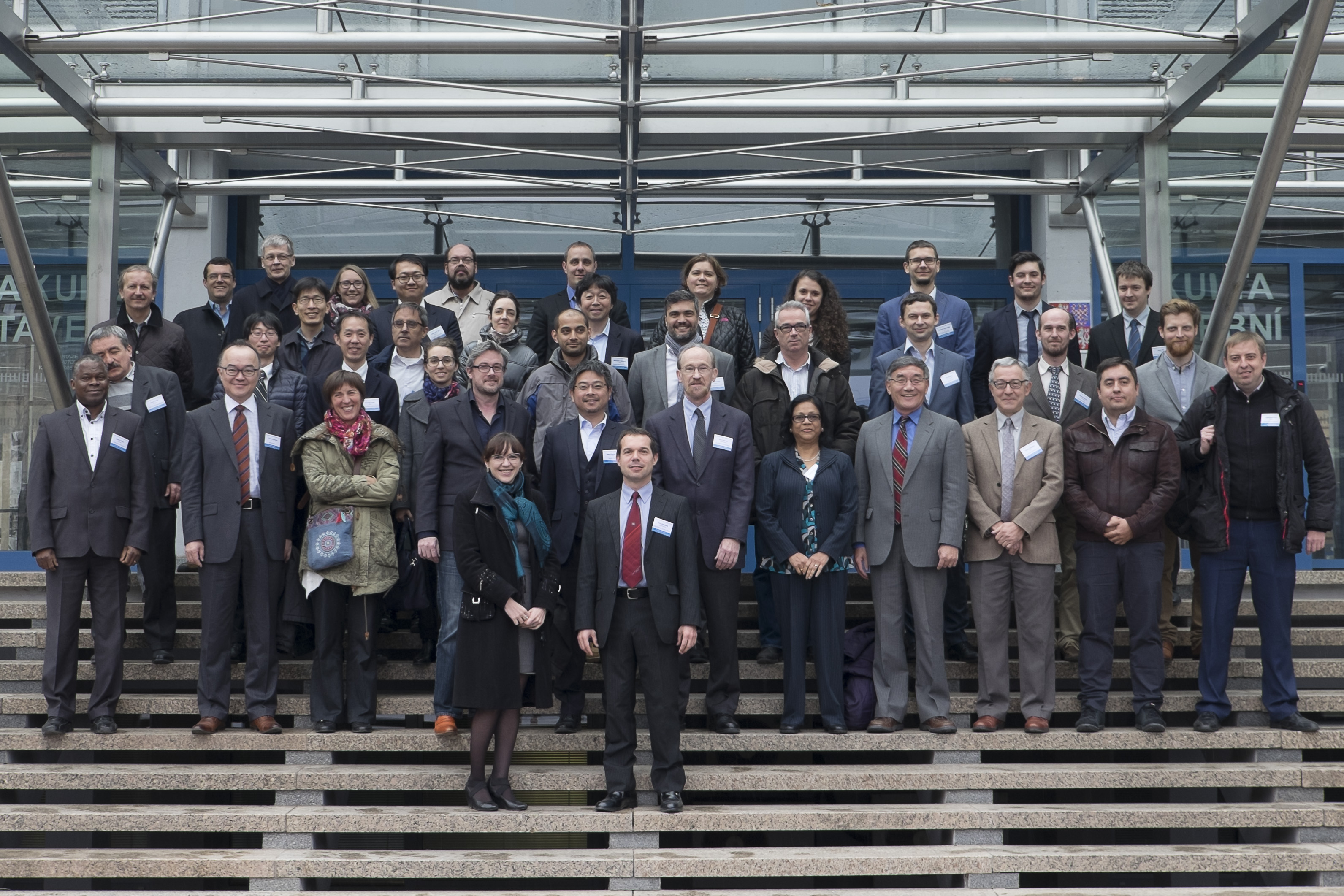
Kick-off meeting of RADCON Project coordinated with International Committee of Irradiated Concrete Meeting at Czech Technical University, Prague, November 2017
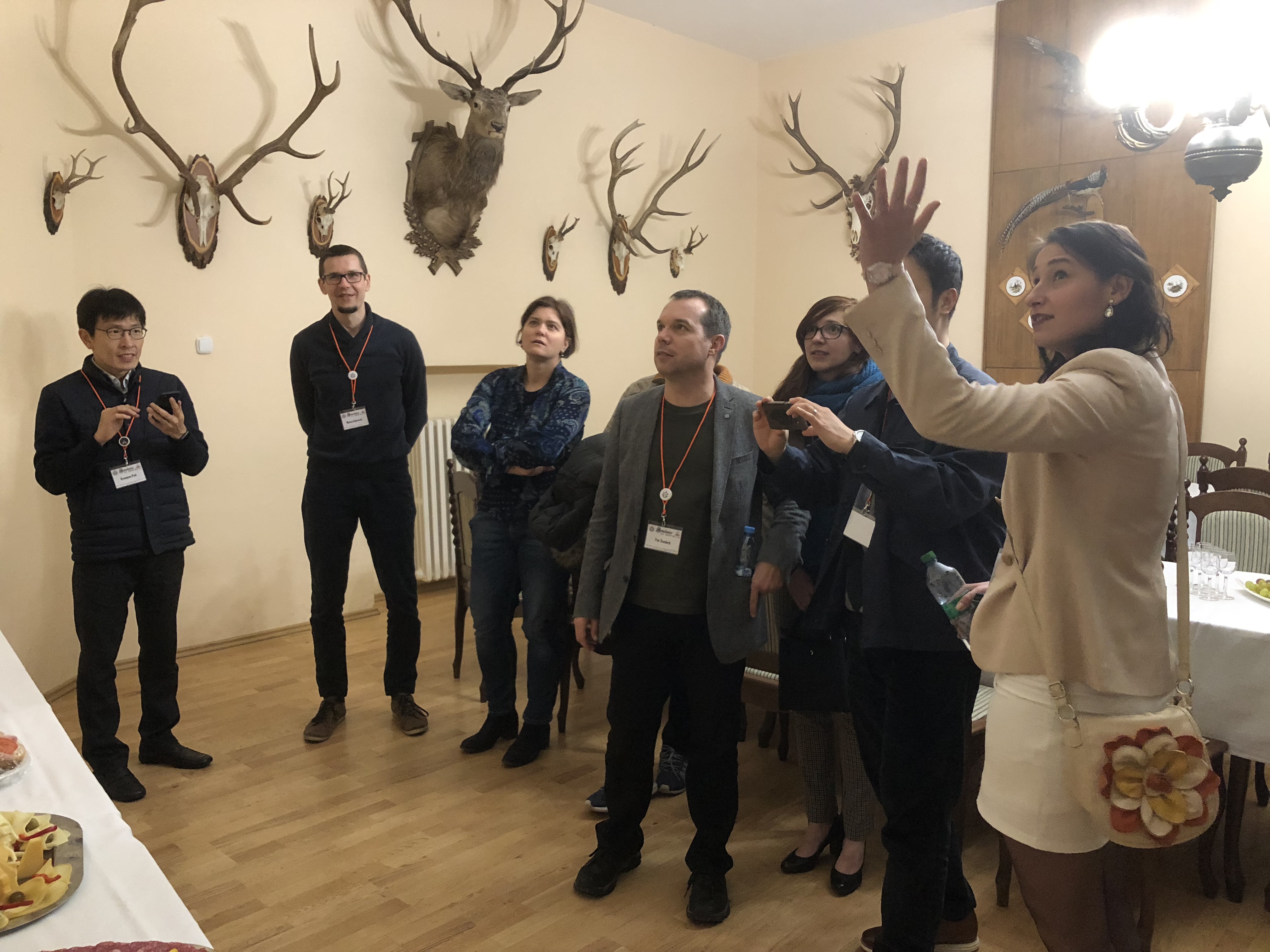
Participants of the 3rd RADCON Workshop at Smolenice Castle, Slovakia, March 2019
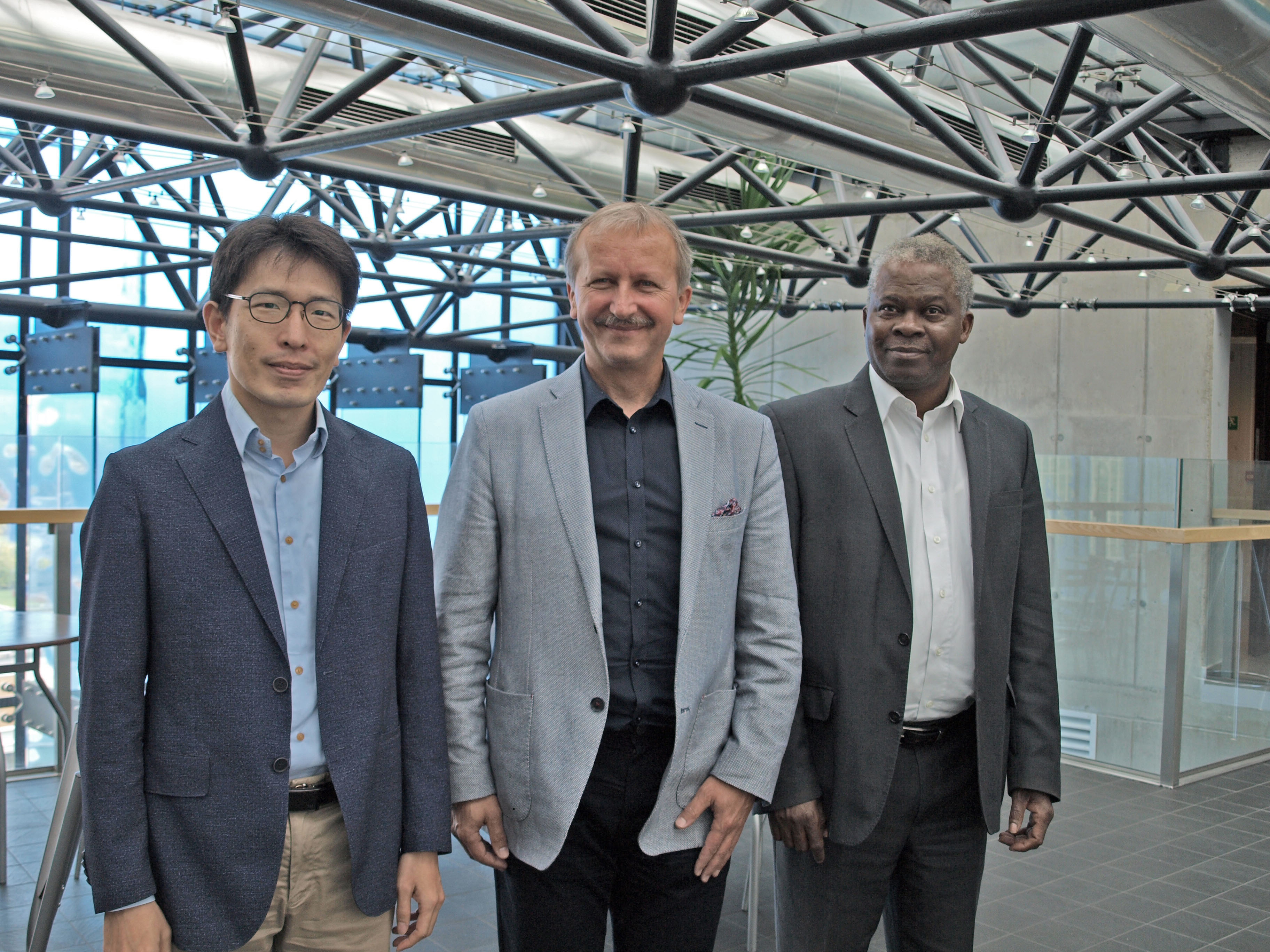
Participants of the 4th RADCON Workshop at IPPT PAN, Warsaw, Poland, September 2019
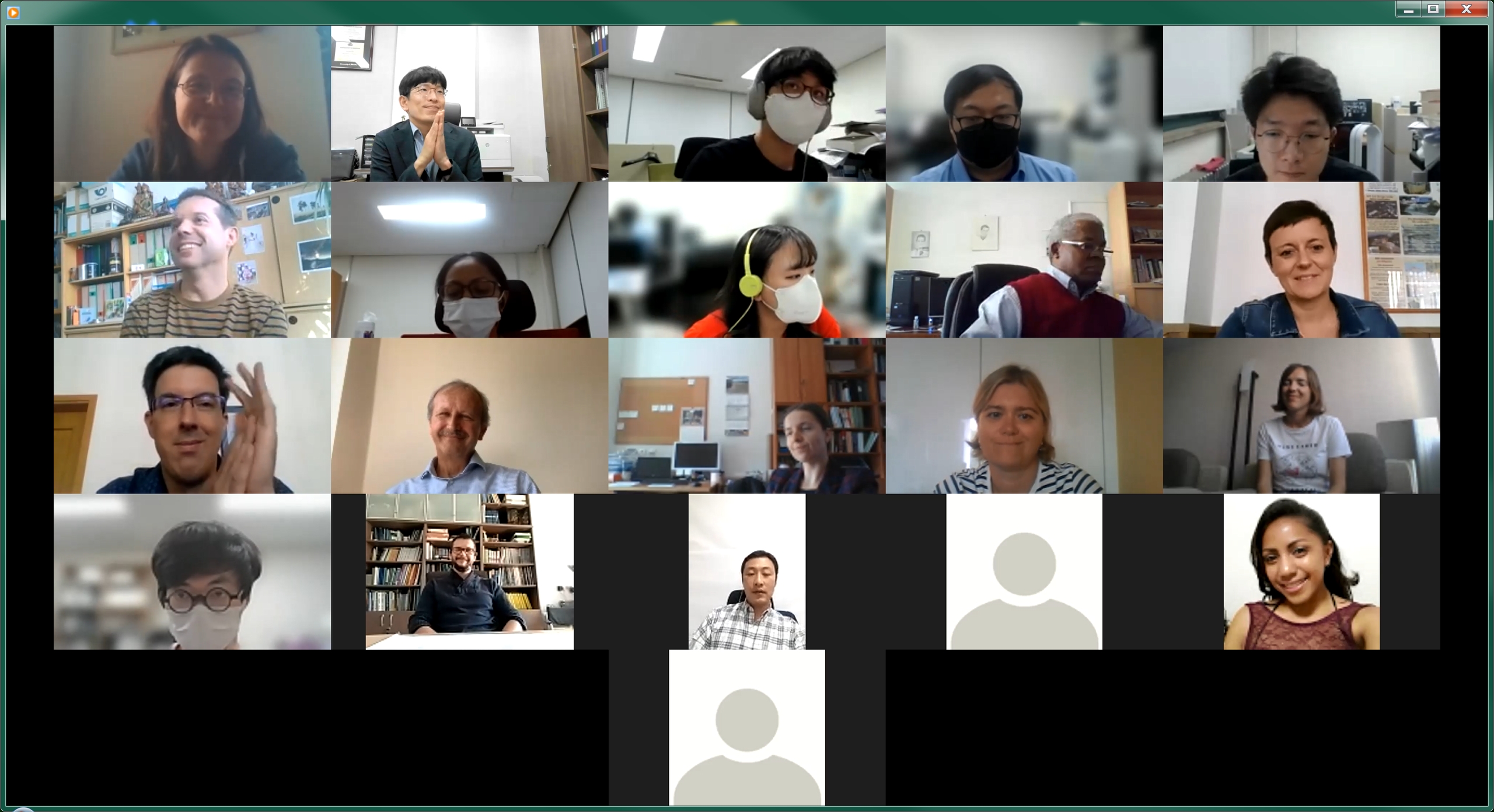
Participants of the Final RADCON Workshop – online organized by Yonsei University,
Korea, September 2021
Conference presentations
INTRODUCTION OF IPPT PAN, RESULTS IN RADCON PROJECT, FUTURE PLANS, M.A. Glinicki, RADCON meeting, 12-15 June, 2018, Budapest, Hungary
MICROSTRUCTURE AND PHYSICAL PROPERTIES OF SHIELDING CONCRETE AFTER LONG TERM OPERATION OF POLISH RESEARCH REACTOR, D. Jóźwiak-Niedźwiedzka et al., RADCON meeting, 12-15 June, 2018, Budapest, Hungary
EXPOSURE OF HEAVYWEIGHT CONCRETE TO GAMMA IRRADIATION IN SPENT FUEL POOL, D. Jóźwiak-Niedźwiedzka et al., RADCON meeting, 12-15 June, 2018, Budapest, Hungary
RADCON ACTIVITIES AT IPPT PAN AND JOINT RESEARCH TOPICS, M.A. Glinicki, RADCON meeting, 11-14 March, 2019, Smolenice, Slovakia
IMPACT OF GAMMA RADIATION ON BORON RETARDED MORTAR IN EARLY AGE OF HARDENING, M. Dąbrowski, RADCON meeting, 11-14 March, 2019, Smolenice, Slovakia
LOW - ACTIVATION CONCRETE, D. Jóźwiak-Niedźwiedzka, RADCON meeting, 11-14 March, 2019, Smolenice, Slovakia
LOW - ACTIVATION CONCRETE 'BETON NISKOAKTYWUJĄCY SIĘ', D. Jóźwiak-Niedźwiedzka, PPO IPPT PAN Seminar, 16 April, 2019, Warsaw, Poland
WPŁYW PROMIENIOWANIA GAMMA NA EKSPANSJĘ ZAPRAWY. ETAP I - BADANIA WSTĘPNE W LABORATORIUM, K. Dziedzic, PPO IPPT PAN Seminar, 16 July, 2019, Warsaw, Poland
KALORYMETRIA IZOTERMICZNA. PRZEGLĄD WYNIKÓW BADANIA CEMENTU Z DODATKIEM MINERAŁÓW BORONOŚNYCH I NANOKRZEMIONKI, K. Gibas, PPO IPPT PAN Seminar, 16 July, 2019, Warsaw, Poland
VOIDS CHARACTERIZATION IN AIR ENTRAINED CONCRETE SPECIMENS USING OPTICAL MICROSCOPY AND MERCURY INTRUSION POROSIMETRY, A. Antolik et al., RADCON meeting, 25-26 September, 2019, Warsaw, Poland
LOW - ACTIVATION CONCRETE: PRELIMINARY RESULTS, D. Jóźwiak-Niedźwiedzka, RADCON meeting, 25-26 September, 2019, Warsaw, Poland
RADCON: WHERE ARE WE HEADING TO?, M.A. Glinicki, RADCON meeting, 25-26 September, 2019, Warsaw, Poland
DŁUGOŻYCIOWE IZOTOPY PROMIENIOTWÓRCZE W SKŁADNIKACH KOMPOZYTÓW CEMENTOWYCH, D. Jóźwiak-Niedźwiedzka, ZMD IPPT PAN Seminar, 22 January, 2020, Warsaw, Poland
WPŁYW PROMIENIOWANIA GAMMA NA WCZESNĄ WYTRZYMAŁOŚĆ BETONU I ZJAWISKO RADIOLIZY, M.A. Glinicki, PPO IPPT PAN Seminar, 15 April, 2020, Warsaw, Poland
VOIDS CHARACTERIZATION IN AIR ENTRAINED CONCRETE SPECIMENS USING OPTICAL MICROSCOPY, NEUTRON IMAGING AND X-RAY COMPUTED TOMOGRAPHY, A. Antolik, M. Dąbrowski, M.A. Glinicki, PPO IPPT PAN Seminar, 5 May, 2020, Warsaw, Poland
WPŁYW PROMIENIOWANIA GAMMA NA MINERAŁY, K. Dziedzic, PPO IPPT PAN Seminar, 22 May, 2020, Warsaw, Poland
ASSESSMENT OF LONG-LIVED RESIDUAL RADIOISOTOPES IN CEMENT INDUCED BY NEUTRON RADIATION, D. Jóźwiak-Niedźwiedzka et al., MATBUD'2020 Scientific-Technical Conference: E-mobility, Sustainable Materials and Technologies, 19-21 October, 2020, Cracow, Poland
NAPROMIENIANIE PRÓBEK ZAPRAWY NA STANOWISKU STERYLIZACYJNYM W BASENIE PRZECHOWAWCZYM REAKTORA MARIA - DŁUGOTRWAŁE ODDZIAŁYWANIE RADIACYJNE, D. Jóźwiak-Niedźwiedzka, M. Dąbrowski, K. Dziedzic, J. Kuziak, PPO IPPT PAN Seminar, 30 July, 2021, Warsaw, Poland
GAMMA IRRADIATION SENSITIVITY OF EARLY HARDENING CONCRETE, A. Antolik, M.A. Glinicki, M. Dąbrowski, K. Dziedzic, V4-Korea RADCON Online Workshop, 02-03 September, 2021
INFLUENCE OF GAMMA IRRADIATION ON THE EXPANSION OF CONCRETE WITH DIFFERENT AGGREGATES, K. Dziedzic, V4-Korea RADCON Online Workshop, 02-03 September, 2021
INFLUENCE OF GAMMA IRRADIATION ON THE INITIATION OF STEEL CORROSION IN CONCRETE, M. Dąbrowski, V4-Korea RADCON Online Workshop, 02-03 September, 2021
SELECTION OF MATERIALS IN RESPECT TO THE CONTENT OF LONG-LIVED RADIOISOTOPES AND ALKALI-SILICA REACTION, D. Jóźwiak-Niedźwiedzka, V4-Korea RADCON Online Workshop, 02-03 September, 2021
AIR VOID DISTRIBUTION IN CONCRETE STUDIED USING X-RAY/NEUTRON TOMOGRAPHIC IMAGING AND OPTICAL REFLECTION IMAGING, M.A. Glinicki, A. Antolik, M. Dąbrowski, V4-Korea RADCON Online Workshop, 02-03 September, 2021
SYNTHESIS OF RADCON PROJECT RESULTS OBTAINED AT IPPT PAN, M.A. Glinicki, V4-Korea RADCON Online Workshop, 02-03 September, 2021
OCENA JAKOŚCI BETONU W OSŁONIE REAKTORA PO 35 LATACH EKSPLOATACJI, A. Antolik, D. Jóźwiak-Niedźwiedzka, M. Dąbrowski, M.A. Glinicki, XI Konferencja DNI BETONU Tradycja i Nowoczesność, 11-13 October, 2021, Wisła, Poland, (plakat – I nagroda: http://www.ippt.pan.pl/aktualnosci/dni-betonu-z-ippt-pan)
OBRÓBKA ŚWIEŻEGO BETONU ZA POMOCĄ PROMIENIOWANIA GAMMA, K. Dziedzic, A. Antolik, M. Dąbrowski, M.A. Glinicki, XI Konferencja DNI BETONU Tradycja i Nowoczesność, 11-13 October, 2021, Wisła, Poland
EFFECTS OF GAMMA IRRADIATION ON THE STEEL CORROSION IN CONCRETE, M. Dąbrowski, International Committee on Irradiated Concrete 5th General Meeting, 6-10 June, 2022, Padova, Italy
THE CONTROL OF SETTING AND EARLY HARDENING OF CEMENT BY BORON COMPOUNDS AND GAMMA IRRADIATION, M.A. Glinicki, M. Dąbrowski, K. Dziedzic, A. Antolik, International Committee on Irradiated Concrete 5th General Meeting, 6-10 June, 2022, Padova, Italy

